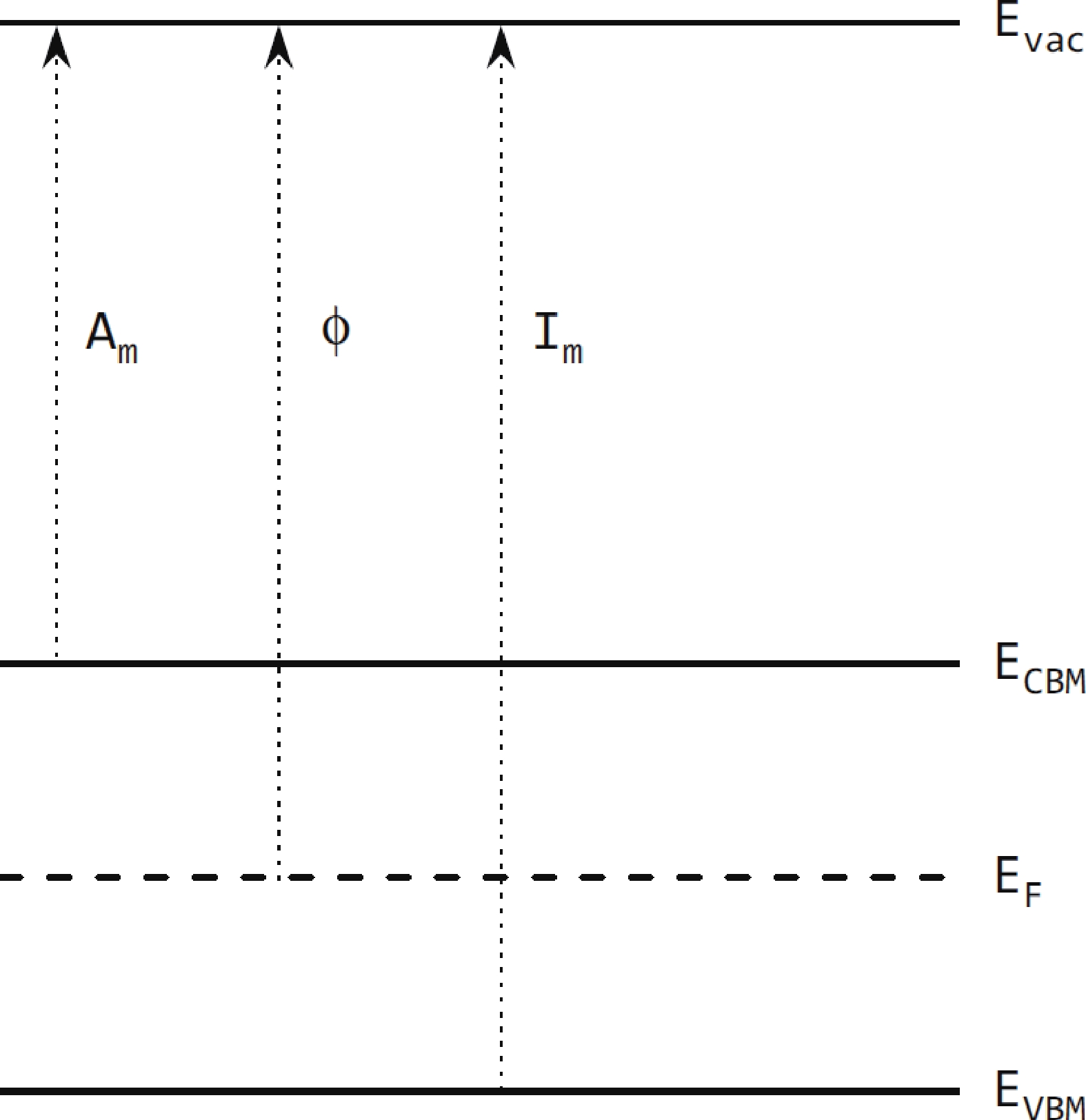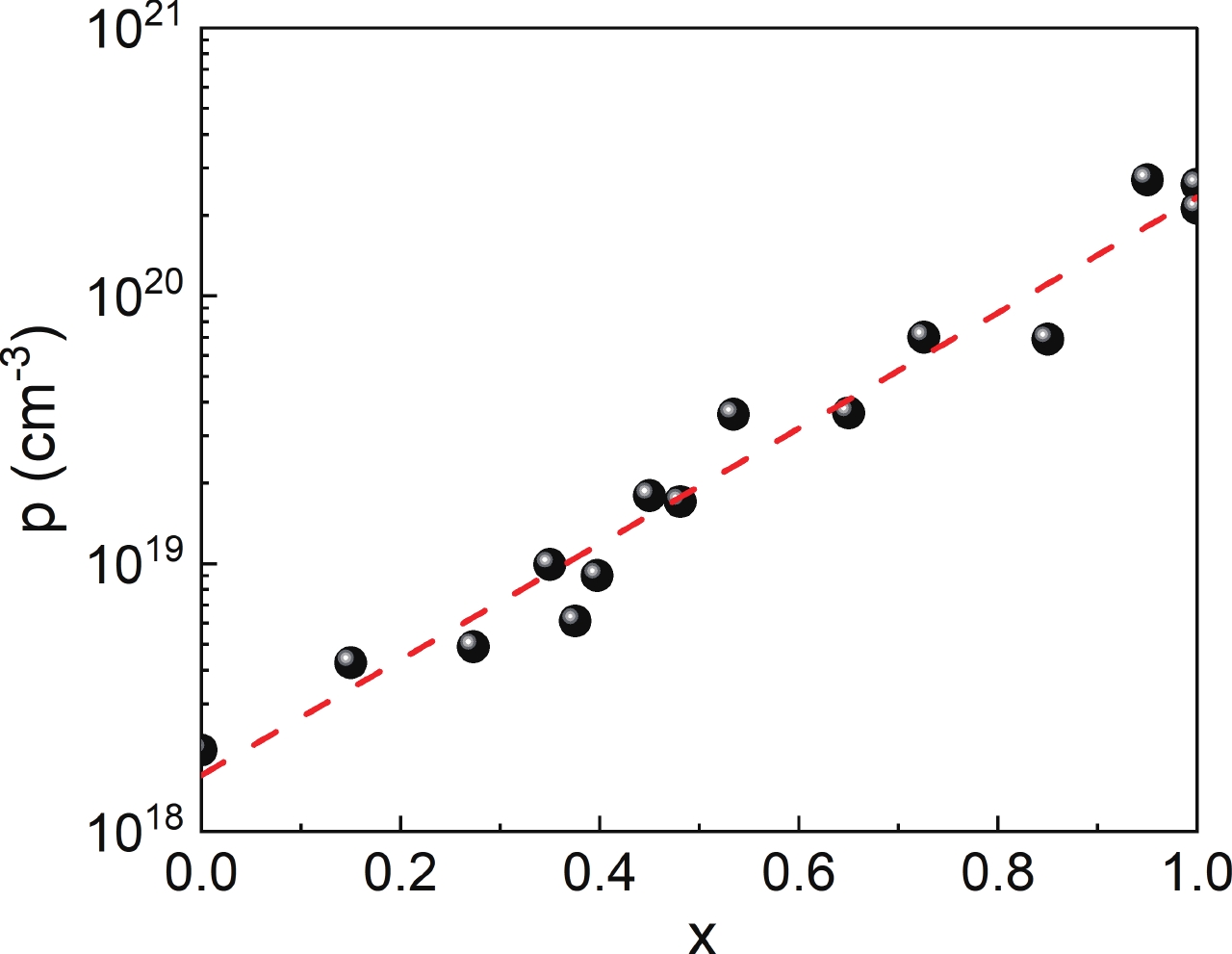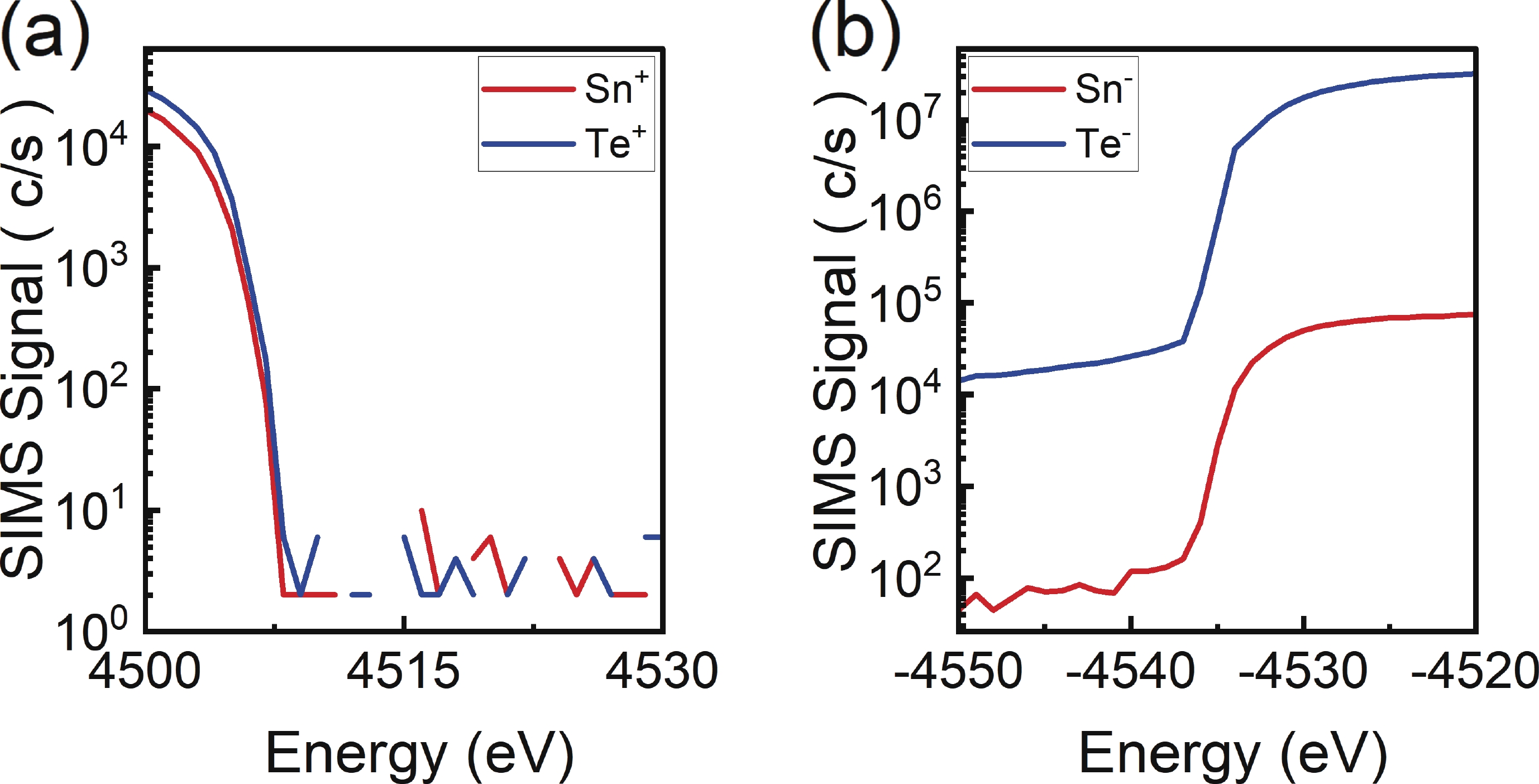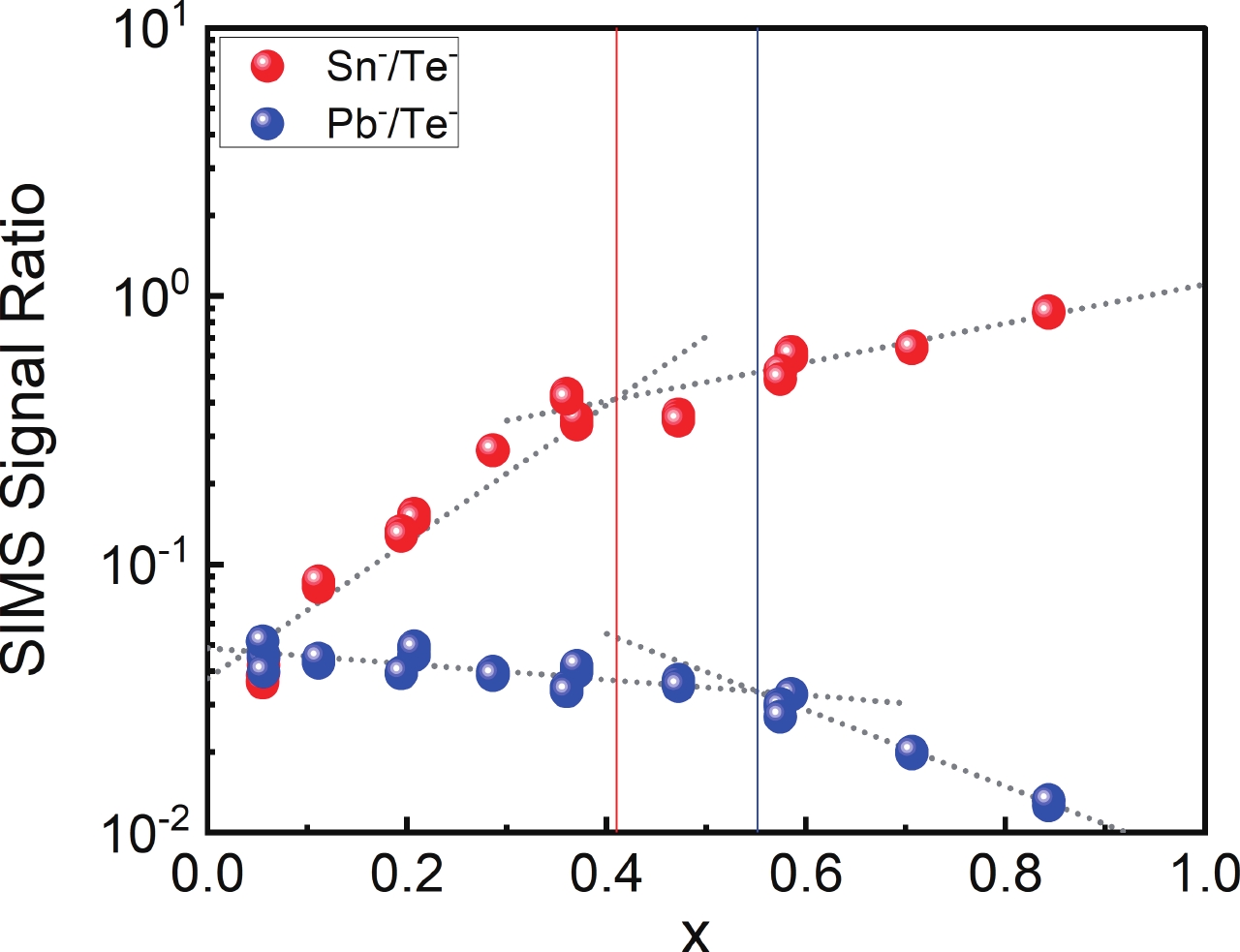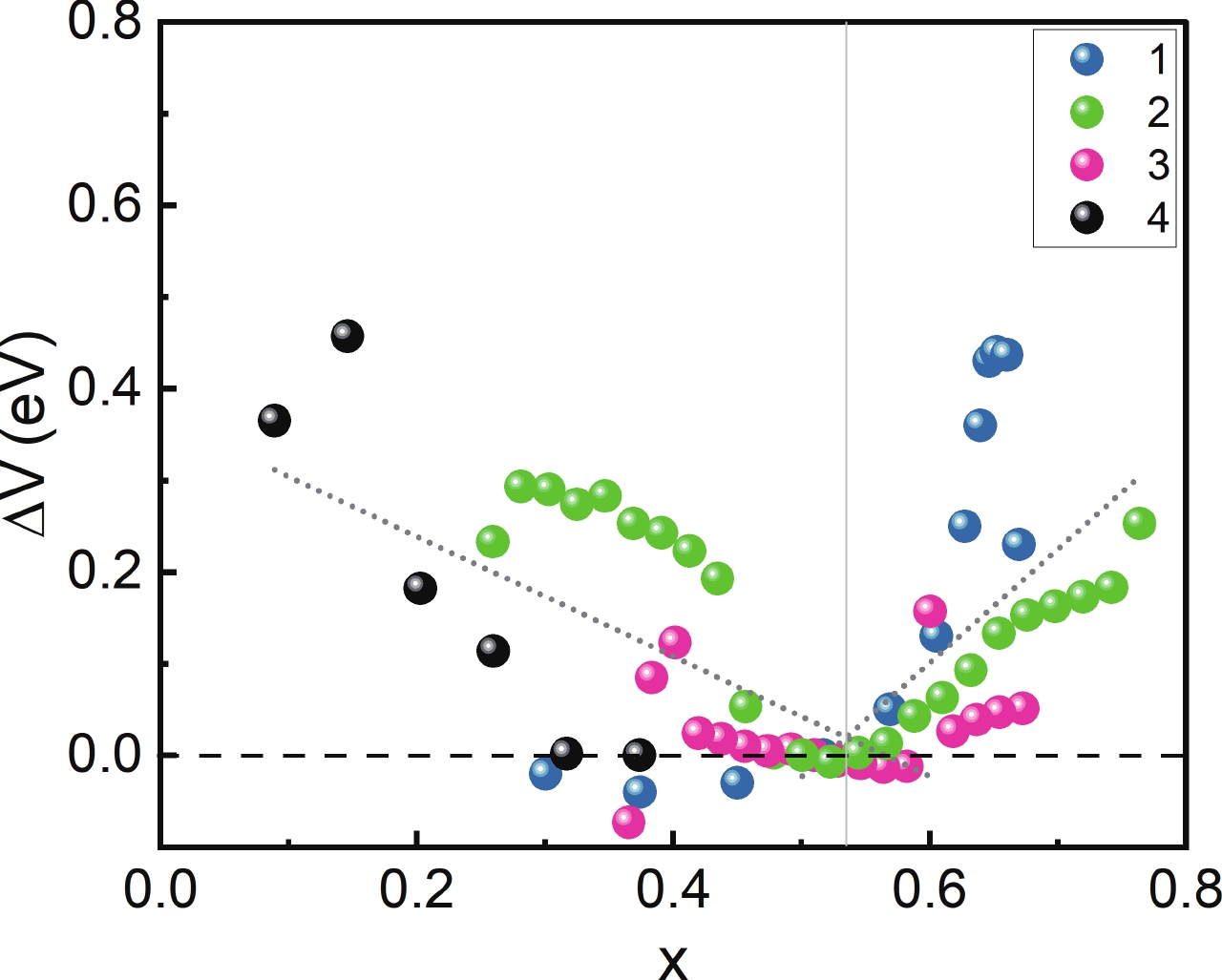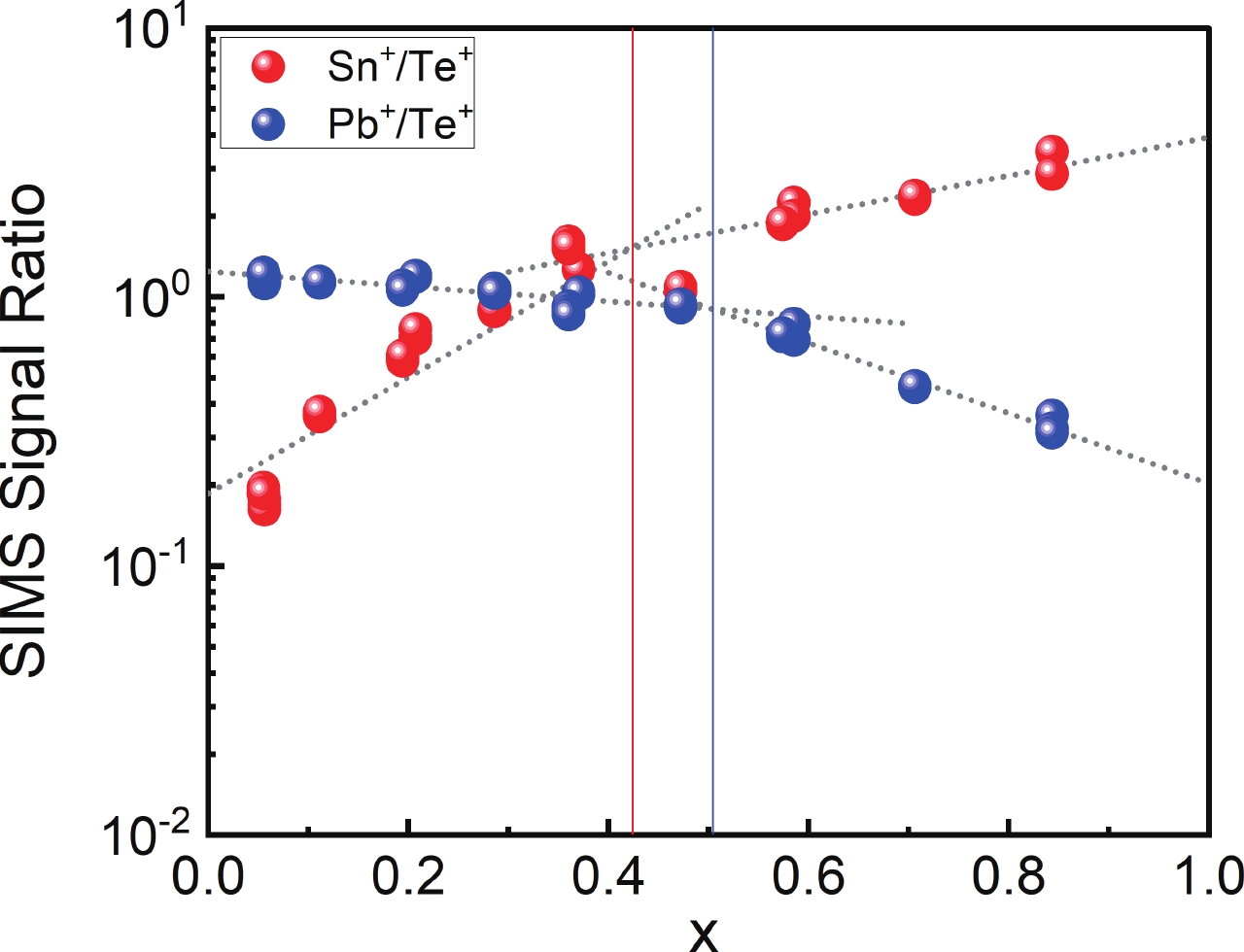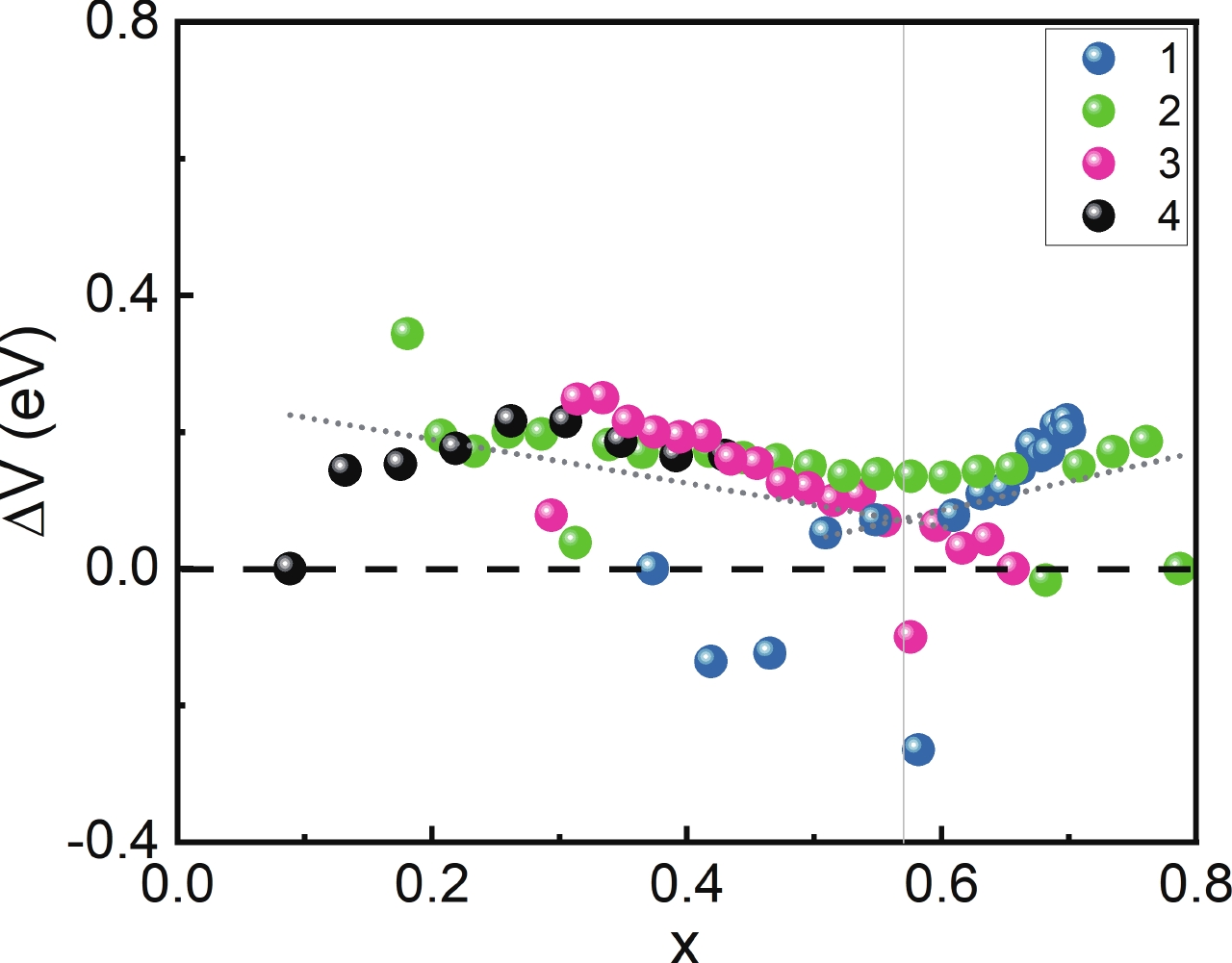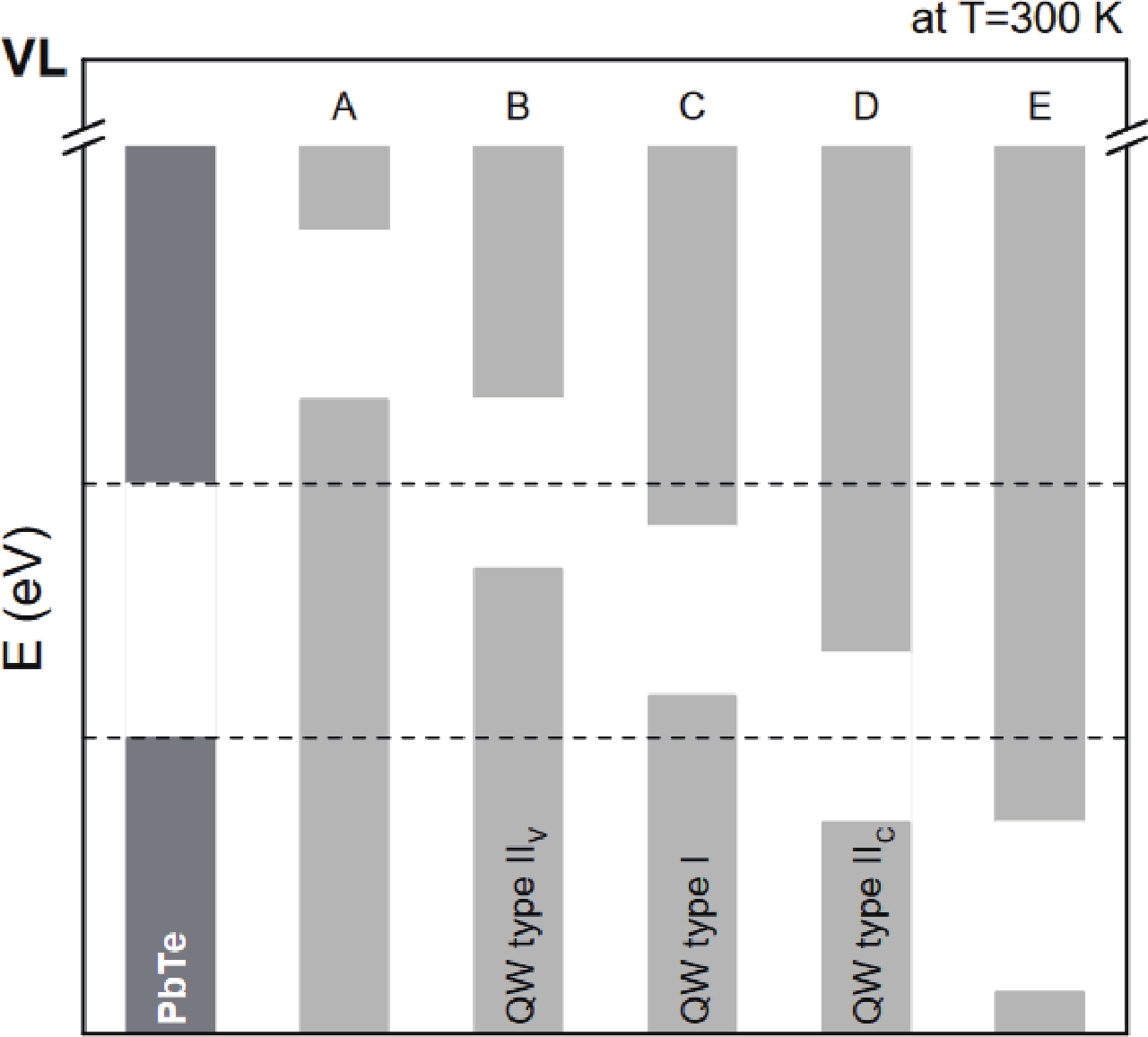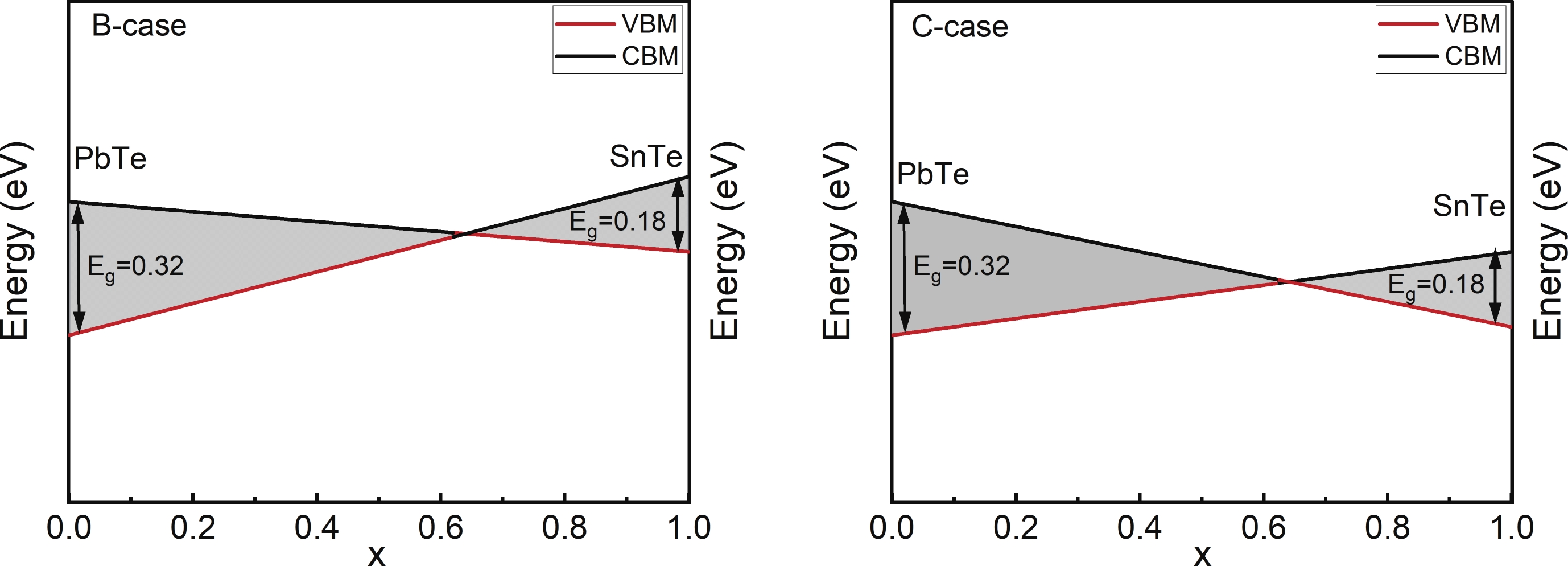| Citation: |
Zeinab Khosravizadeh, Piotr Dziawa, Sania Dad, Andrzej Dabrowski, Rafał Jakiela. A novel approach for observing band gap crossings using the SIMS technique in Pb1−xSnxTe[J]. Journal of Semiconductors, 2024, 45(11): 112102. doi: 10.1088/1674-4926/24040023
****
Z Khosravizadeh, P Dziawa, S Dad, A Dabrowski, and R Jakiela, A novel approach for observing band gap crossings using the SIMS technique in Pb1−xSnxTe[J]. J. Semicond., 2024, 45(11), 112102 doi: 10.1088/1674-4926/24040023
|
A novel approach for observing band gap crossings using the SIMS technique in Pb1−xSnxTe
DOI: 10.1088/1674-4926/24040023
More Information
-
Abstract
This paper introduces a pioneering application of secondary ion mass spectrometry (SIMS) for estimating the electronic properties of Pb1−xSnxTe, a compound categorized as a topological crystalline insulator. The proposed approach marks the first application of SIMS for such estimations and focuses on investigating variations in ionization probabilities and shifts in the energy distribution of secondary ions. The ionization probabilities are influenced by pivotal parameters such as the material's work function and electron affinity. The derivation of these parameters hinges upon the energy gap's positioning relative to the vacuum level for varying values of $ x $ within the Pb1−xSnxTe compound. The findings elucidate noteworthy alterations in SIMS signals, particularly near the critical point of band-gap closing.-
Keywords:
- SIMS,
- TCI,
- ionization probability,
- work function,
- Pb1−xSnxTe,
- band-gap closing
-
References
[1] Ocio M, Albany H. Two valence band evidence and thermal energy gap in Pb1−xSnxTe. Phys Lett A, 1968, 27(2), 72 doi: 10.1016/0375-9601(68)91125-0[2] Preier H. Recent advances in lead-chalcogenide diode lasers. Appl Phys, 1979, 20(3), 189 doi: 10.1007/BF00886018[3] Arachchige I, Kanatzidis M. Anomalous band gap evolution from band inversion in Pb1−xSnxTe nanocrystals. Nano Lett, 2009, 9(4), 1583 doi: 10.1021/nl8037757[4] Fu L. Topological crystalline insulators. Phys Rev Lett, 2011, 106(10), 106802 doi: 10.1103/PhysRevLett.106.106802[5] Dziawa P, Kowalski B J, Dybko K, et al. Topological crystalline insulator states in Pb1−xSnxSe. Nat Mater, 2012, 11(12), 1023 doi: 10.1038/nmat3449[6] Xu S, Liu C, Alidoust N, et al. Observation of a topological crystalline insulator phase and topological phase transition in Pb1−xSnxTe. Nat Commun, 2012, 3(1), 1192 doi: 10.1038/ncomms2191[7] Tanaka Y, Ren Z, Sato T, et al. Experimental realization of a topological crystalline insulator in SnTe. Nat Phys, 2012, 8(11), 800 doi: 10.1038/nphys2442[8] Polley C M, Dziawa P, Reszka A, et al. Observation of topological crystalline insulator surface states on (111)-oriented Pb1−xSnxSe films. Phys Rev B, 2014, 89(7), 075317 doi: 10.1103/PhysRevB.89.075317[9] Dimmock J, Melngailis I, Strauss A. Band structure and laser action in PbxSn1−xTe. Phys Rev Lett, 1966, 16(26), 1193 doi: 10.1103/PhysRevLett.16.1193[10] Kahn A. Fermi level, work function and vacuum level. Mater Horiz, 2016, 3(1), 7 doi: 10.1039/C5MH00160A[11] Desjonqures M, Spanjaard D. Concepts in surface physics. Berlin: Springer, 1996[12] Woodruff D. Modern techniques of surface science. Cambridge: Cambridge University Press, 2016[13] Janssen A P, Akhter P, Harland C J, et al. High spatial resolution surface potential measurements using secondary electrons. Surf Sci, 1980, 93(2), 453[14] Gnaser H. Initial stages of cesium incorporation on keV-Cs+-irradiated surfaces: Positive-ion emission and work-function changes. Phys Rev B, 1996, 54(23), 17141 doi: 10.1103/PhysRevB.54.17141[15] Gnaser H. Exponential scaling of sputtered negative-ion yields with transient work-function changes on Cs+ bombarded surfaces. Phys Rev B, 1996, 54(23), 16456 doi: 10.1103/PhysRevB.54.16456[16] Yamazaki H, Nakamura S. Work-function changes in high-dose B-implanted Si with keV Cs+ bombardment. Phys Rev B, 1999, 59(19), 12298 doi: 10.1103/PhysRevB.59.12298[17] Khosravizadeh Z, Dziawa P, Dad S, et al. Secondary ion mass spectrometry characterization of matrix composition in topological crystalline insulator Pb1−xSnxTe. Thin Solid Films, 2023, 781, 139974 doi: 10.1016/j.tsf.2023.139974[18] Berchenko N, Vitchev R, Trzyna M, et al. Surface oxidation of SnTe topological crystalline insulator. Appl Surf Sci, 2018, 452, 134 doi: 10.1016/j.apsusc.2018.04.246[19] Yu M. Sputtering by particle bombardment III. Berlin: Springer, 1991[20] Mönch W. Semiconductor surfaces and interfaces. Berlin: Springer, 1995[21] Bonzel H. Alkali-metal-affected adsorption of molecules on metal surfaces. Surf Sci Rep, 1988, 8(2), 43 doi: 10.1016/0167-5729(88)90007-6[22] Blaise G, Slodzian G. Effets comparés de l’oxygène sur l’émission ionique et le potentiel de surface des métaux. Surf Sci, 1973, 40(3), 708 doi: 10.1016/0039-6028(73)90154-4[23] Yu M, Lang N. Mechanisms of atomic ion emission during sputtering. Nucl Instrum Meth B, 1986, 14(4), 403 doi: 10.1016/0168-583X(86)90135-7[24] Nørskov J K, Lundqvist B I. Secondary-ion emission probability in sputtering. Phys Rev B, 1979, 19(11), 5661 doi: 10.1103/PhysRevB.19.5661[25] Buchauer L. Superconductivity and Fermi surface of Tl: PbTe. Master Dissertation, École supérieure de physique et de chimie industrielles de la ville de Paris/Technische Universität Darmstadt, 2017[26] He J, Androulakis J, Kanatzidis M, et al. Seeing is believing: Weak phonon scattering from nanostructures in alkali metal-doped lead telluride. Nano Lett, 2012, 12(1), 343 doi: 10.1021/nl203626n[27] Kowalczyk L, Szczerbakow A. Temperature and composition dependence of the energy band gap of PbxMnySnxSe alloys. Acta Phys Pol A, 1985, 67(1), 189 doi: 10.1007/BF00618116[28] Łusakowski A, Bogusławski P, Story T. Band structure and topological phases of Pb1−x−ySnxMnyTe by ab initio calculations. Phys Rev B, 2021, 103(4), 045202 doi: 10.1103/PhysRevB.103.045202 -
Proportional views





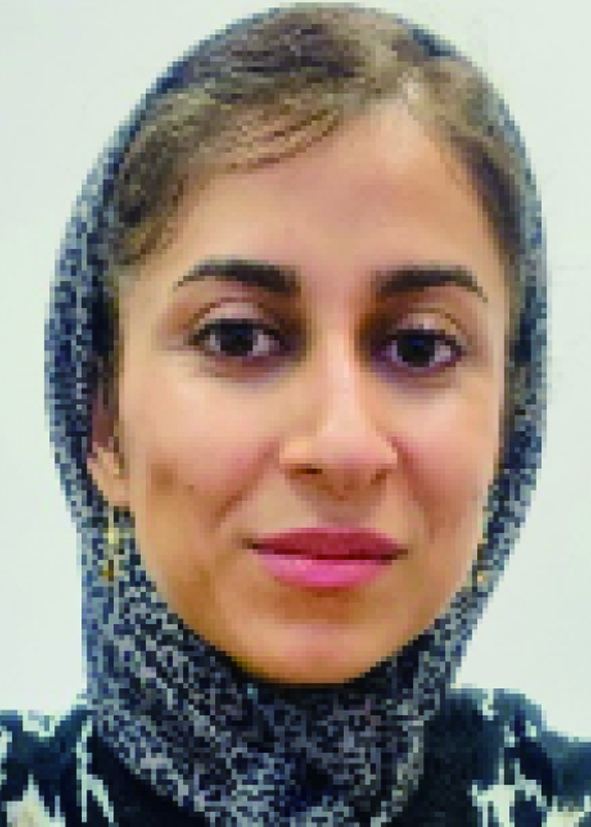 Zeinab Khosravizadeh is a Ph.D. candidate in solid-state physics at the Polish Academy of Sciences. Her research focuses on material science and semiconductor physics, specializing in secondary ion mass spectrometry, advanced materials characterization. She has also studied diffusion of dopants in semiconductor materials, and synthesizing magnetic Nano particles.
Zeinab Khosravizadeh is a Ph.D. candidate in solid-state physics at the Polish Academy of Sciences. Her research focuses on material science and semiconductor physics, specializing in secondary ion mass spectrometry, advanced materials characterization. She has also studied diffusion of dopants in semiconductor materials, and synthesizing magnetic Nano particles.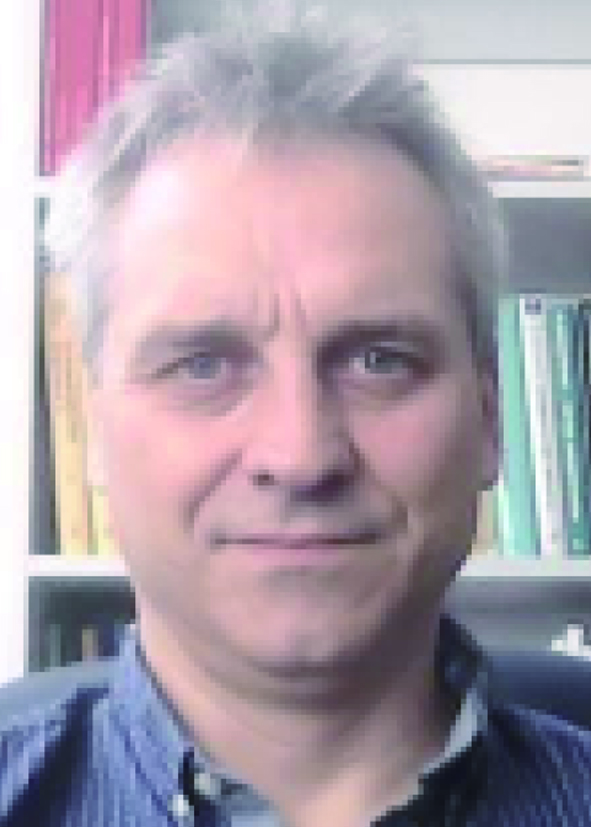 Rafał Jakiela Rafal Jakiela is currently a Professor of Physics and Head of the secondary ion mass spectrometry laboratory at the Polish Academy of Sciences. He received his PhD from the Polish Academy of Science in 2005. He is an expert in analysing solid-state materials using SIMS. His studies focus on the diffusion and segregation of dopants in semiconductor materials.
Rafał Jakiela Rafal Jakiela is currently a Professor of Physics and Head of the secondary ion mass spectrometry laboratory at the Polish Academy of Sciences. He received his PhD from the Polish Academy of Science in 2005. He is an expert in analysing solid-state materials using SIMS. His studies focus on the diffusion and segregation of dopants in semiconductor materials.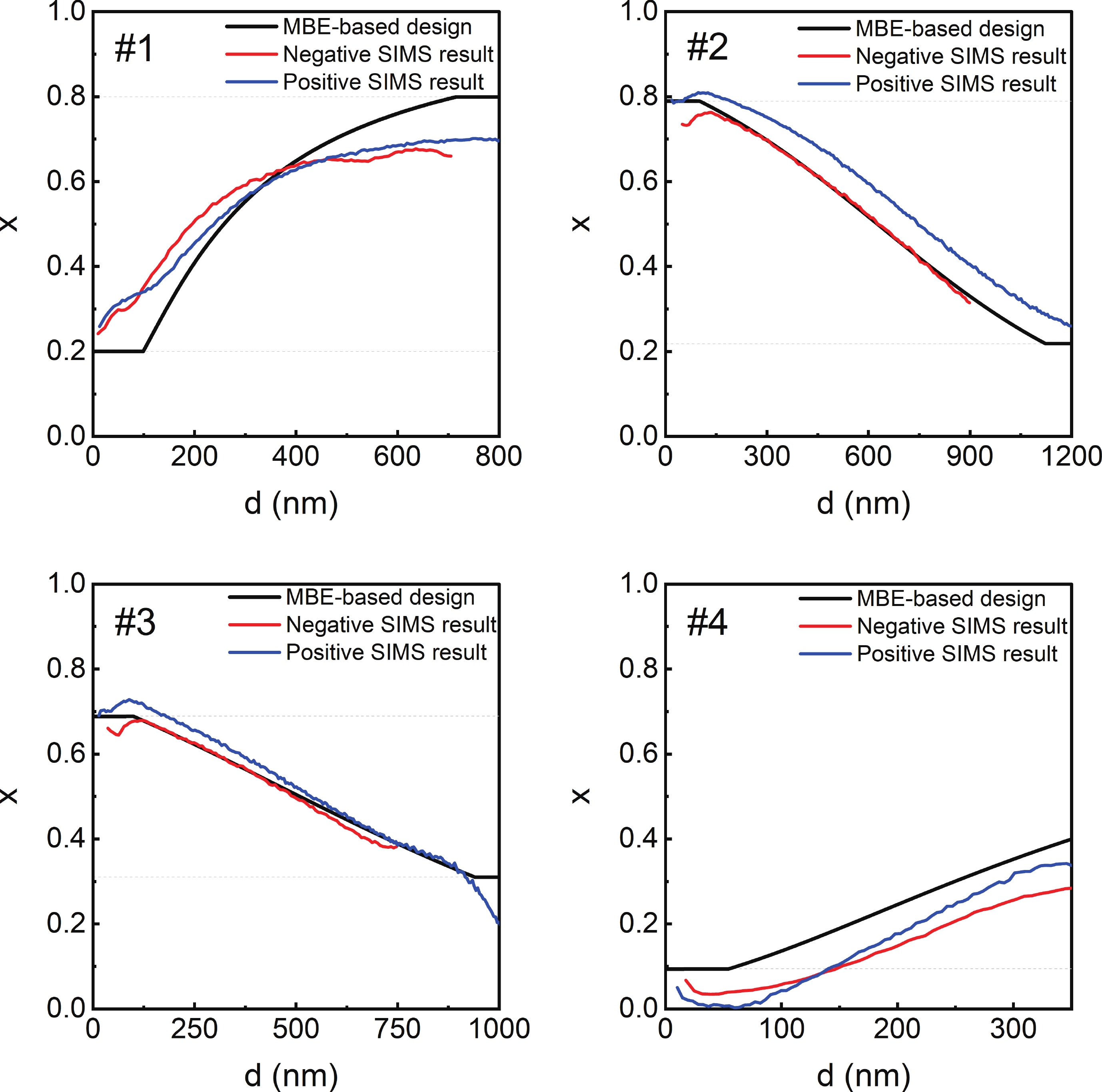
 DownLoad:
DownLoad:
